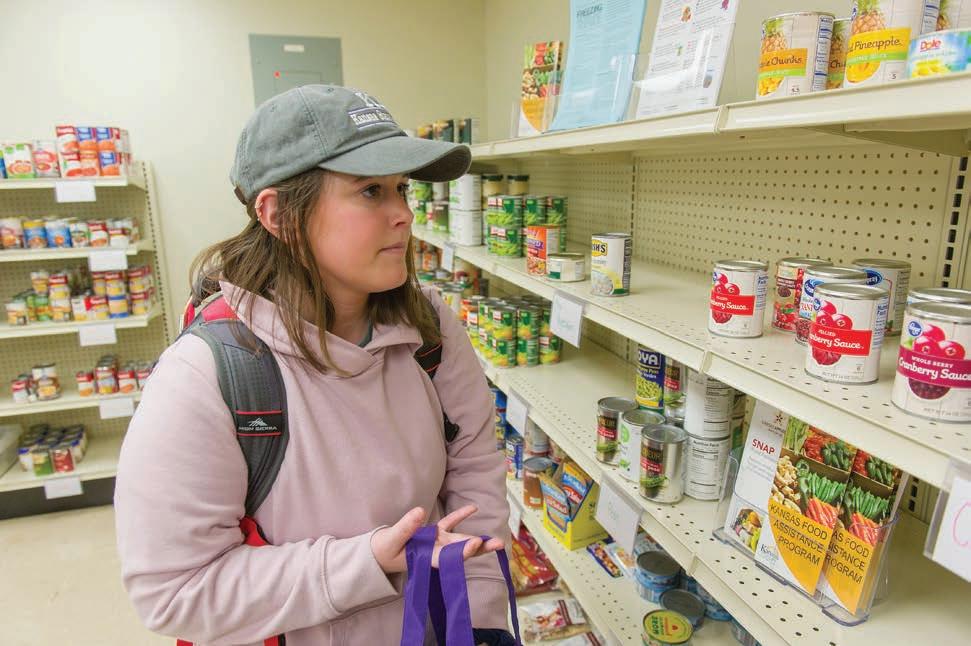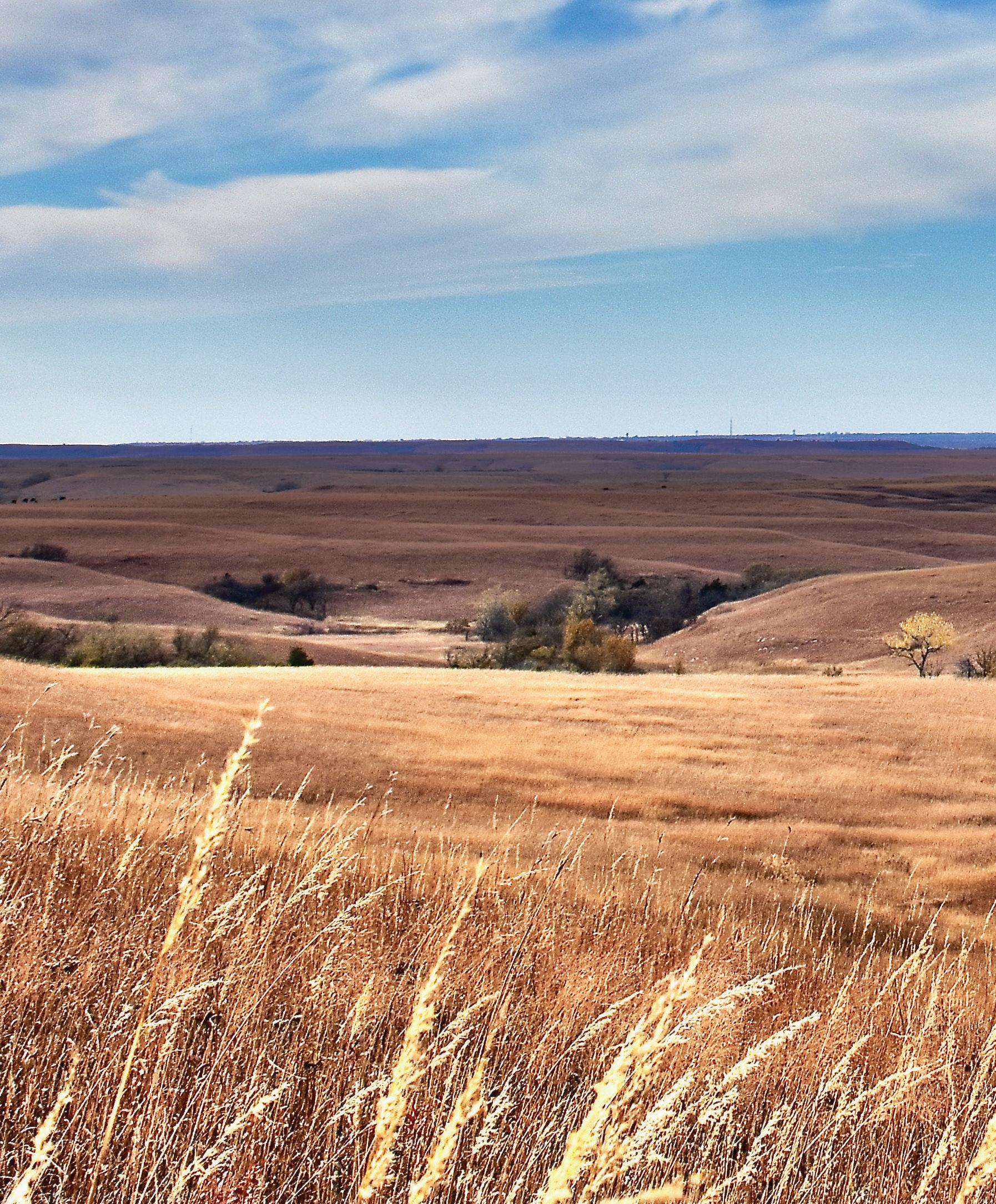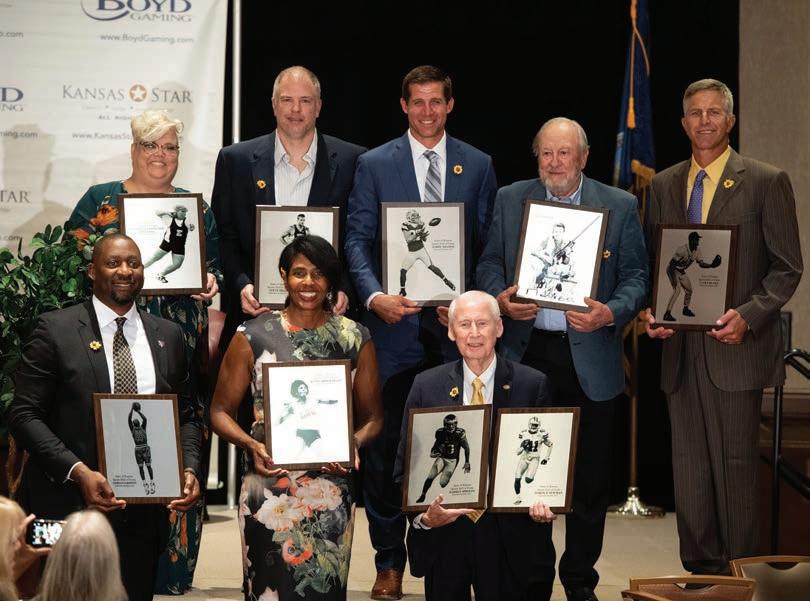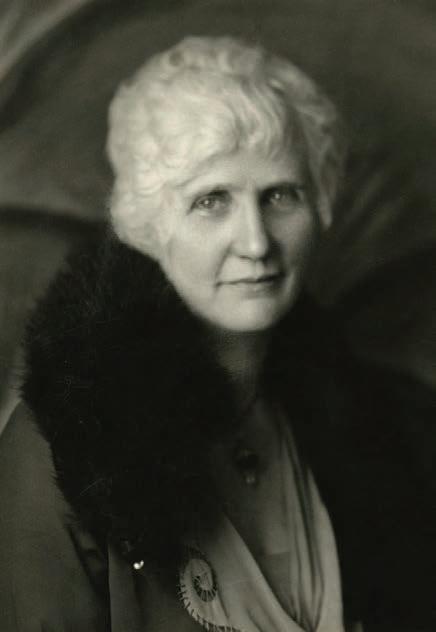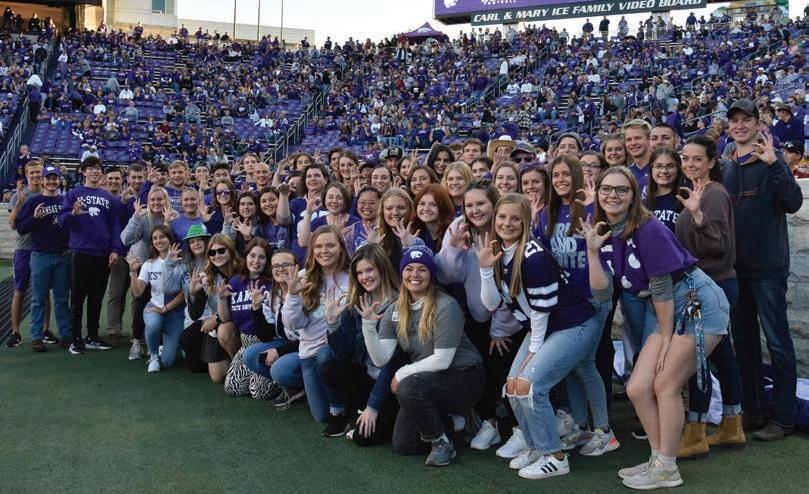AROUND K-STATE
FROM THE
Archives
Mary Van Zile ’29 was an advocate for women during her tenure BY VERONICA DENISON, UNIVERSITY ARCHIVIST AND ASSISTANT PROFESSOR Many students through the years have either lived in or walked by Van Zile Hall, which was the first residential hall built on campus. It opened in 1926 as an all-female hall, and became co-ed in the fall of 1968. But many may not remember or know the woman it was named after. Mary Pierce Van Zile ’29 was born on Feb. 7, 1872 in Solomon, Kansas. However, she spent most of her young life in Winfield, Iowa, where she also began her teaching career. From 1888-1891, she attended K-State; however she did not graduate at that time. Instead, she moved back to Iowa, becoming a principal at Wayland High School and marrying Gilbert J. Van Zile in 1892. Gilbert Van Zile graduated from K-State in 1890. The couple had two sons before Gilbert died in 1899. After her husband’s death, Mary Van Zile went to Iowa State College and received her teacher’s diploma in 1904. She taught domestic science and art at New Trier Township High School in Winnetka, Illinois for four years. She later obtained a bachelor of science from K-State in 1929. In 1908, Van Zile was appointed as professor of domestic science and dean of women at K-State when the board of regents officially organized the college into deanships. Four years later, the college decided to organize into five distinct divisions, one of which was home economics, and as a result, Van Zile became dean of home economics, in addition to her prior appointments. She soon expanded the home economics courses to include men, teaching table etiquette to about 100 male students. Due to an influx of students, both in the department of home economics and university-wide, Van Zile requested to be relieved of her home economics duties in 1918 after seven years of dual deanship and teaching to fully devote herself as dean of women.
She was so invested in the success of women at K-State, that she held events at her house to better know the women she was responsible for. In her own words from the 1936 Royal Purple, “I want my girls to know all of life and life as it is...so they may choose wisely from the knowledge and experience that they have, that they will build into their lives those things which are ultimately the best and most satisfactory.” While Van Zile’s career at K-State was successful, it was not without bumps. In 1927, Van Zile handed down an edict that female students could not attend dances unless they wore bloomers to cover their knees. She said that the shortness of skirts made it imperative for the “modern young woman to wear bloomers to avoid embarrassment.” It wasn’t too long after that, while at a co-ed dance, female students checked their bloomers at the door along with their coats. After hearing of this, Van Zile appointed representatives at every university sanctioned dance. While she was strict in regards to university rules and attire, she took an active role as dean of women and was considered the voice for women students. Van Zile was instrumental in raising the funds to build Van Zile Hall, and advocated for the reduction of the housing cost of the hall when women students couldn’t afford to live there. She worked hard to prove that home economics was professional work, and she helped and supported women in finding jobs during and after their time at the university. Between 1928 and 1930, she planned 532 social functions, held 2,075 meetings with women students, and helped obtain 455 jobs for students. Mary Van Zile retired as dean of women in 1940, and died in 1949. The Industrialist described her as “one of the most active, colorful, and influential lives ever to affect the Kansas State campus.”
K - S TAT E R
19








